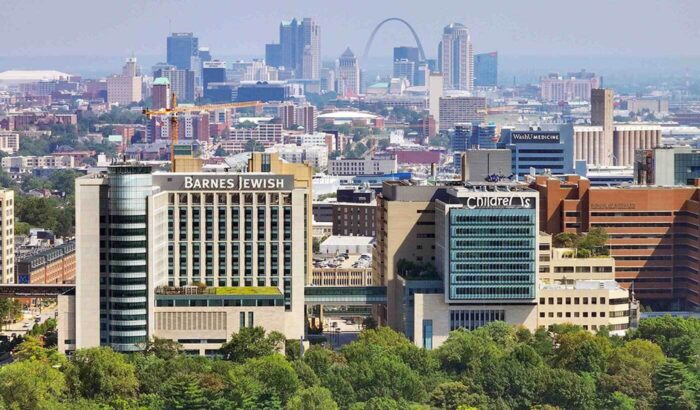Washington University Medical Campus
As an interdisciplinary community of scientists, care providers, learners and innovators, Washington University Medical Campus comprises the core of world-class biomedical research and health care in the St. Louis region and beyond.
Corporate partners of the Medical Campus are Barnes-Jewish Hospital, BJC HealthCare, St. Louis Children’s Hospital, and WashU Medicine.

In addition to its corporate partners, the Medical Campus is home to the Siteman Cancer Center — based at Barnes-Jewish Hospital and WashU Medicine, The Rehabilitation Institute of St. Louis, the University of Health Sciences & Pharmacy, the Barnes-Jewish College Goldfarb School of Nursing and the Shriners Children’s St. Louis.
We treat patients and train students at locations across the region.
See our hospital partners »
The Medical Campus generates an annual economic impact of over $7.5 billion for the St. Louis region, according to an economic model maintained by the St. Louis Regional Commerce and Growth Association. With more than 26,000 employees, the combined Medical Campus institutions are among the largest employers in the St. Louis metropolitan area.

Covering 186 acres over 18 city blocks, the Medical Campus is positioned at the intersection of St. Louis’s Central West End and Forest Park Southeast (also known as the Grove) neighborhoods. The Washington University Medical Center Redevelopment Corporation (WUMCRC) has invested heavily in these neighborhoods to improve quality of life for its residents and visitors. A partnership between WashU Medicine and BJC HealthCare, WUMCRC develops and funds programs focused on economic and housing development, human and social service opportunities, security improvements and public art projects.
The Washington University Medical Campus is also located along the eastern edge of Forest Park, which has earned a reputation as one of the country’s (some say the world’s) most beautiful city parks. Across the park to the west is WashU’s historic Danforth Campus, home to most of the university’s academic divisions.



